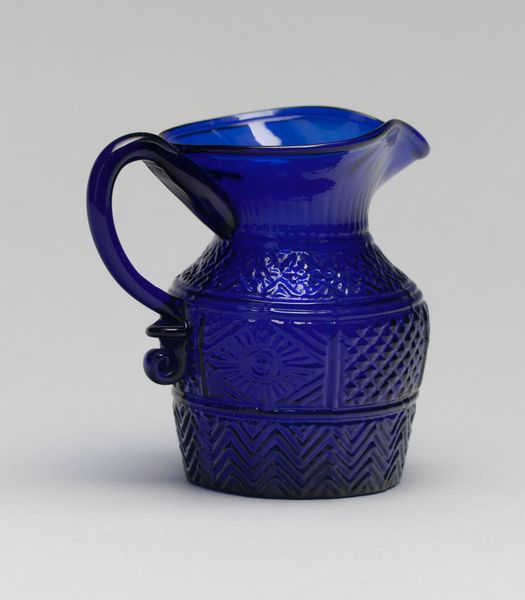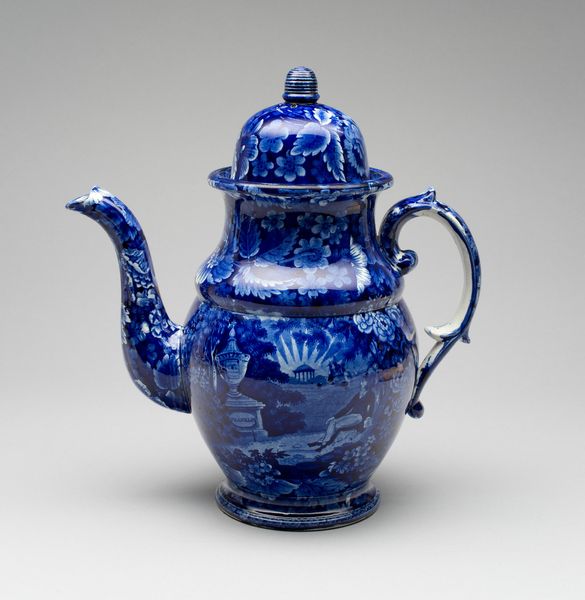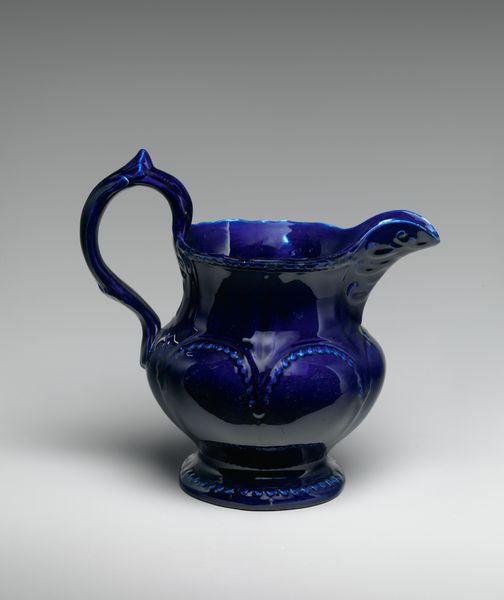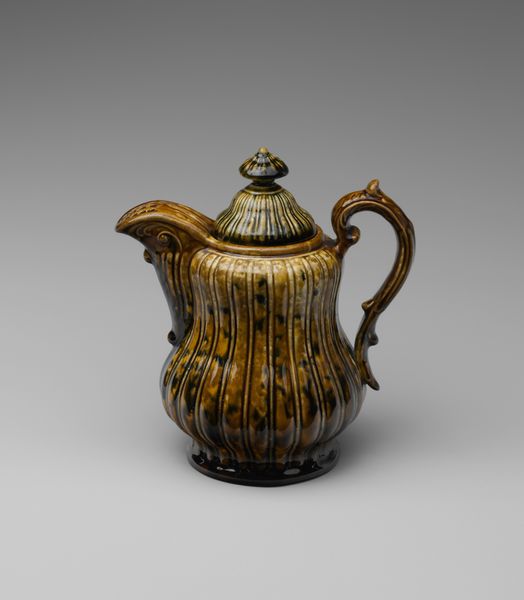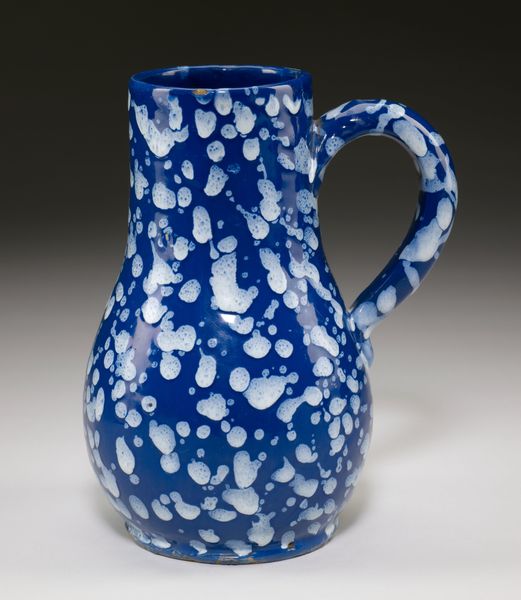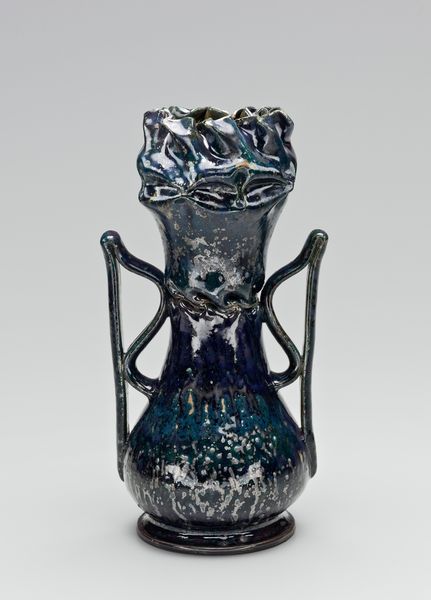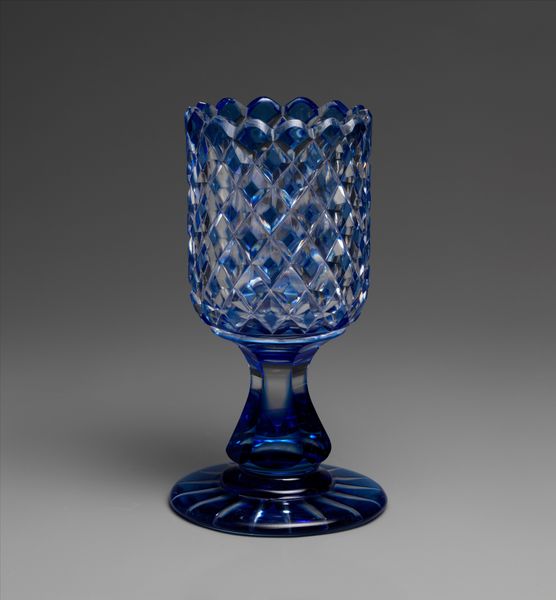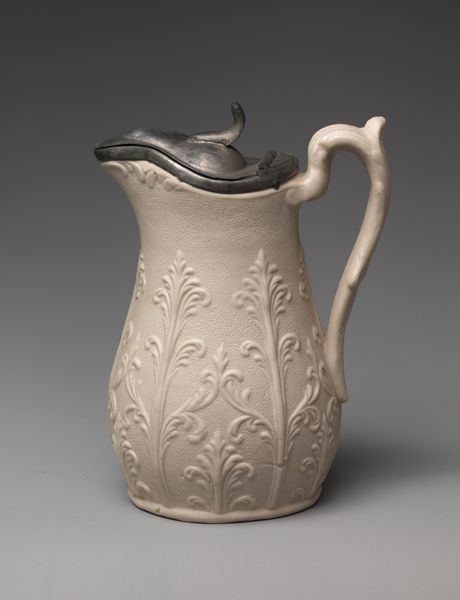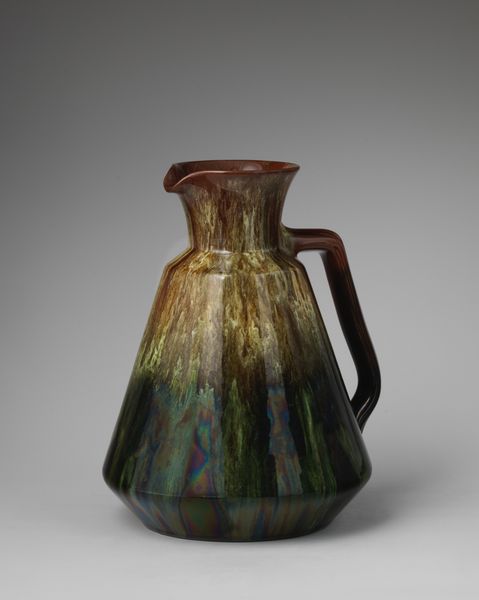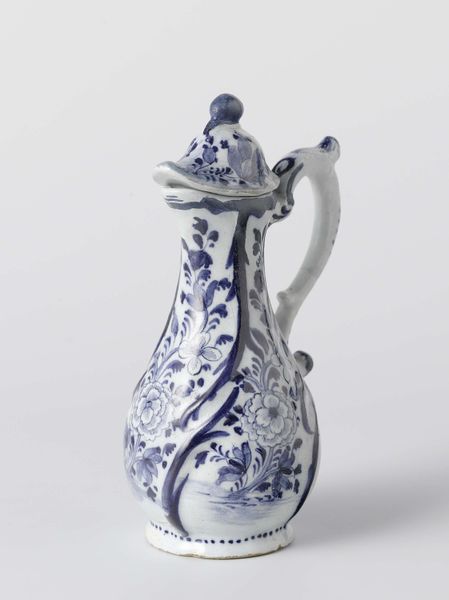
glass
#
glass
Dimensions: 10 3/4 in. (27.3 cm)
Copyright: Public Domain
Editor: So this is a glass pitcher from the Brooklyn Flint Glass Company, dating from about 1850 to 1855. I find its diamond pattern mesmerizing. What are your first impressions of the work? Curator: The intense cobalt blue certainly grabs your attention, doesn't it? But beyond aesthetics, it begs the question: who had access to such luxury items in mid-19th century America? This pitcher isn't merely functional; it's a symbol of social stratification. Consider the labor required to produce such a piece; how were immigrant communities involved? Editor: That’s a good point. It definitely shifts the perspective from simple admiration to thinking about the conditions surrounding its creation and consumption. How does that shape the way you see its design? Curator: Precisely! The diamond pattern, while visually appealing, mimics cut crystal. This imitation reveals aspirations of upward mobility prevalent during the period, mirroring a societal pressure for conspicuous consumption. This reflects gender roles too, in that care and purchase of the tableware would likely have been the responsibility of women, making this pitcher relevant in exploring historical notions of domesticity and gendered power dynamics. Does the democratization of glassmaking in this period tell us something about consumerism in America at the time? Editor: I never thought about it that way! So the beauty becomes secondary to the stories it can tell about the culture. Curator: Exactly! The pitcher isn't just an object; it’s a lens through which we can examine issues of class, labor, and social aspiration. By engaging in conversations like this, we recognize that art—even functional art—is inseparable from the human experiences that created it and gave it meaning.
Comments
No comments
Be the first to comment and join the conversation on the ultimate creative platform.
